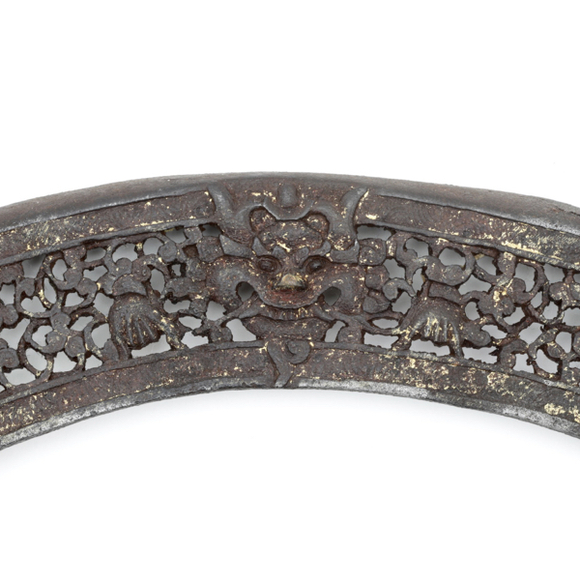This kind of fine work is typical for Tibetan work of the 15th-16th centuries.

78.8 cm / 29.5 inch
66 cm / 24.6 inch
forte 6.5 mm
middle 5.5 mm
near tip 4 mm
forte 38 mm
middle 38 mm
near tip 35 mm
752 grams
23 cm from guard
Tibet, probably Ü-Tsang or Amdo region.
Iron, steel, silver, gold, coral. Scabbard: Iron, silver, lapis lazuli, silk, copper, leather, wood.
18th or 19th century
Introduction
The dpa'dam of Tibet is a long, single edged sword usually with oblique tip that served as the standard side-arm of the Tibetan warrior. They represent an old style of sword common over a large area including China, but which was replaced in China by curved swords from the late Song dynasty onwards. Only remote areas like Tibet, Bhutan, Sikkim, and areas of Yunnan and Sichuan retained the straight, single edged swords until recent times. The dpa'dam was worn thrust through the belt, edge up.
Many cultures have devised ways to make swords out of different types of steel to create a sword blade with the desired properties of hardness and toughness in the right areas. What sets the Tibetans apart is that their smiths worked in high altitudes with low oxygen levels and limited fuel, making it more difficult to heat large forges to high temperatures. As a consequence, they devised ways to weld the layers together using a minimum of heat, stacking the layers instead of folding them. This results in the typical "hairpin pattern", named so after the hairpin-like shape of its various layers.
This example
A very good example of a dpa'dam, the standard sidearm of the Tibetan warrior. The long, single-edged blade is well-made, using the traditional method of hairpin forging with rods of hard "male iron" (pho lcags) and softer "female iron" (mo lcags) bent like a hairpin, embedded in the blade. In this way it combines seven pieces, forming as many as 13 layers counted from spine to edge.
The hilt consists of a wooden handle wrapped with silver wire. It has a rectangular guard with grooved edges, a trapezoidal ferrule and a trefoil pommel. The pommel holds a coral, highly prized objects in landlocked Tibet. Both facing sides of pommel and ferrule are engraved with scrollwork which was gilt, some of the gold remaining. The scabbard is of typical form with two wooden plates held between an iron u-frame. The bottom part of the frame is meticulously carved in scrollwork, its sides with interlocking swastika fretwork. Both sections were once damascened in gold, of which some remains.
The lower section of the face of the scabbard is covered with a silver plate elaborately chased and chiseled in deep relief with designs of stylized waves and seven conch shells. The silver plate holds three large beads, one coral and two turquoises. Corals were prized imports that often came all the way from the Mediterranean, and the turquoises were believed to provide talismanic protection. The conch represents the spread of the teachings of the Buddha, awakening its subjects from their slumber of ignorance. The bottom of the frame holds a large silver dome-shaped "wheel of joy" (dga' 'khyil), a significant symbol in Tibetan Buddhism.
The upper face of the frame is covered with a piece of elaborate silk fabric with threads wrapped in thin copper. The material reminds strongly of the heavy, metallic wrapped silk of Qing dynasty ceremonial armors for the princely ranks.The back face of the scabbard is covered with dark green dyed leather. At the top, the two ends of the frame are held together by a leather band with a Chinese taiji symbol applied to it. There is a crack on the upper back side of the frame, which seems of no structural consequence. See pictures. Some dirt and age-related de-coloration in the textile. Some wear mainly to the gold. Otherwise, both sword and scabbard are in excellent, original condition with no significant damage or repairs.
Comparable examples
A number of similar swords have been published, many of them in the authoritative work on Tibetan arms and armor, Larocca's "Warriors of the Himalayas".1 See for example catalog number 62, Metropolitan Museum accession number 36.25.1458a. It has a very similar hilt, including the guard, albeit this time in gold openwork. Also see catalog number 64, Metropolitan Museum accession number 36.25.1462a, b for a short Tibetan dagger with a similar scabbard, albeit ours is of finer quality manufacture. All above swords are from the George Cameron Stone collection that were bequethed to the Museum in 1935.

The prince of Jonê, a district in the Gannan Tibetan Autonomous Prefecture, Gansu, China. Taken in 1925.
He is holding a very similar sword, probably an antique already at the time.
Photo taken by explorer Joseph Francis Rock (1884-1962) who wrote
"Life Among the Lamas of Choni" for National Geographic Magazine, 1928.
Conclusion
A rather good Tibetan dpa'dam. Quality-wise it compares well to most of these on the market. It is of a high-quality manufacture and remains in excellent, original condition.
Further reading
Donald J. Larocca. Warriors of the Himalayas; Rediscovering the Arms and Armor of Tibet. The Metropolitan Museum of Art, New York. Yale University Press, New Haven and London. A must-have on the subject.
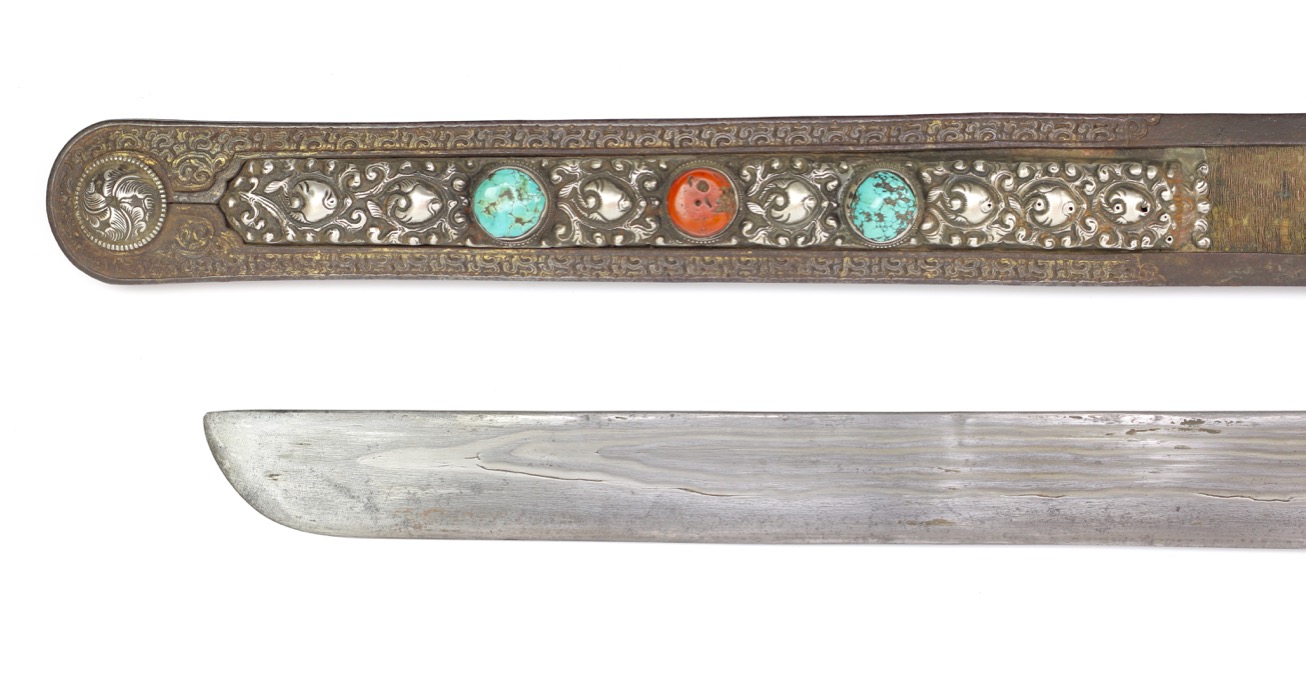




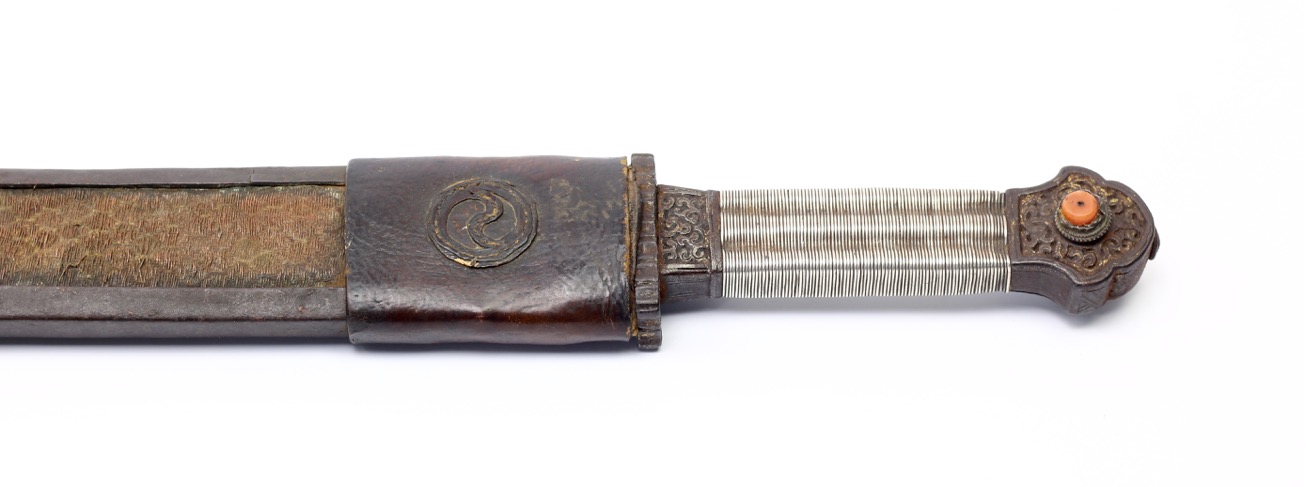

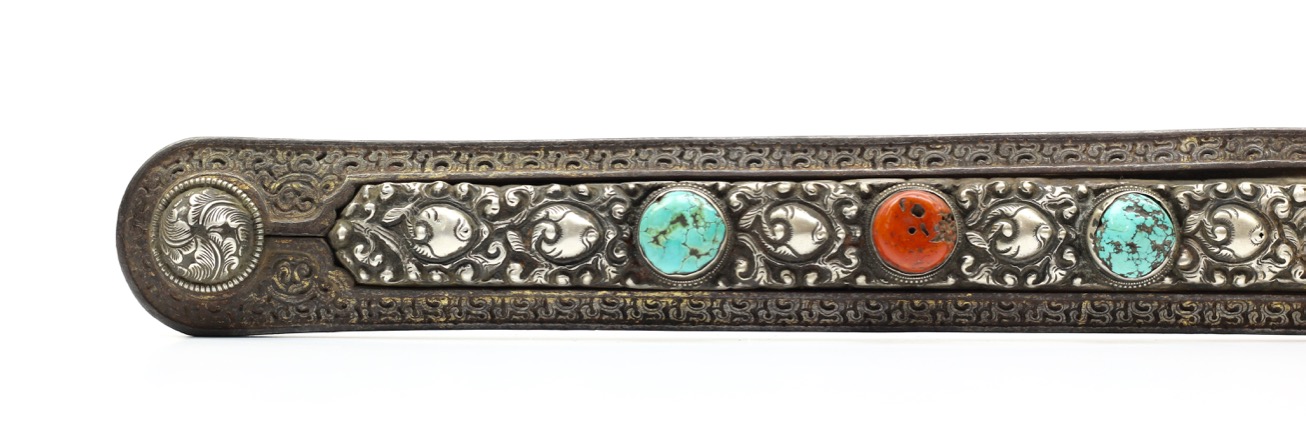
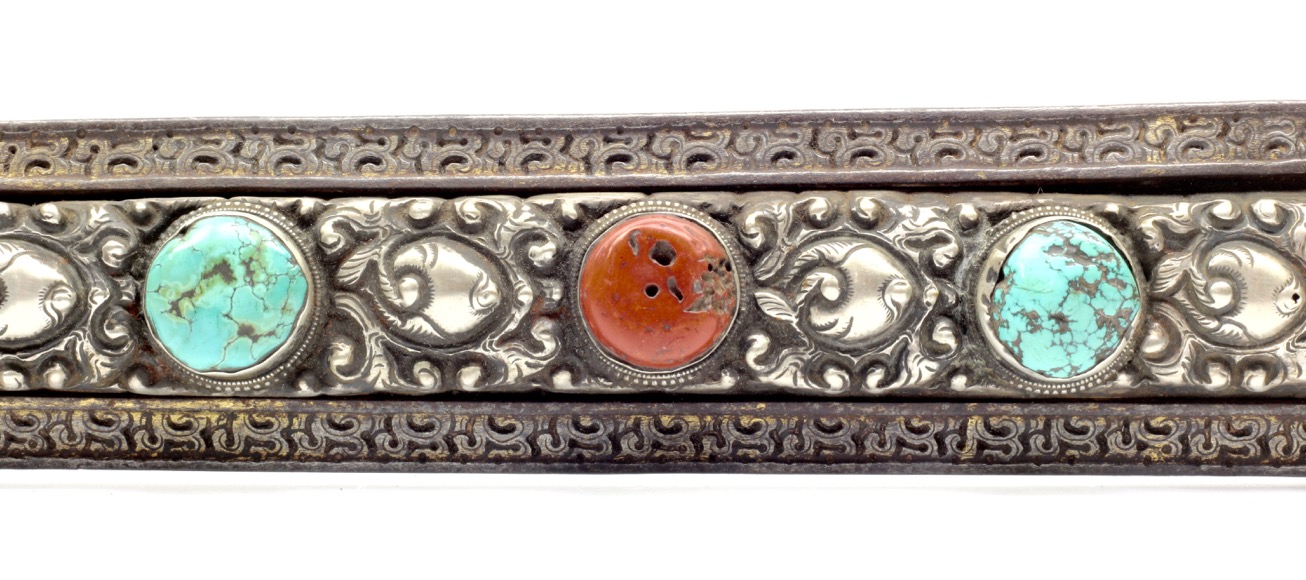
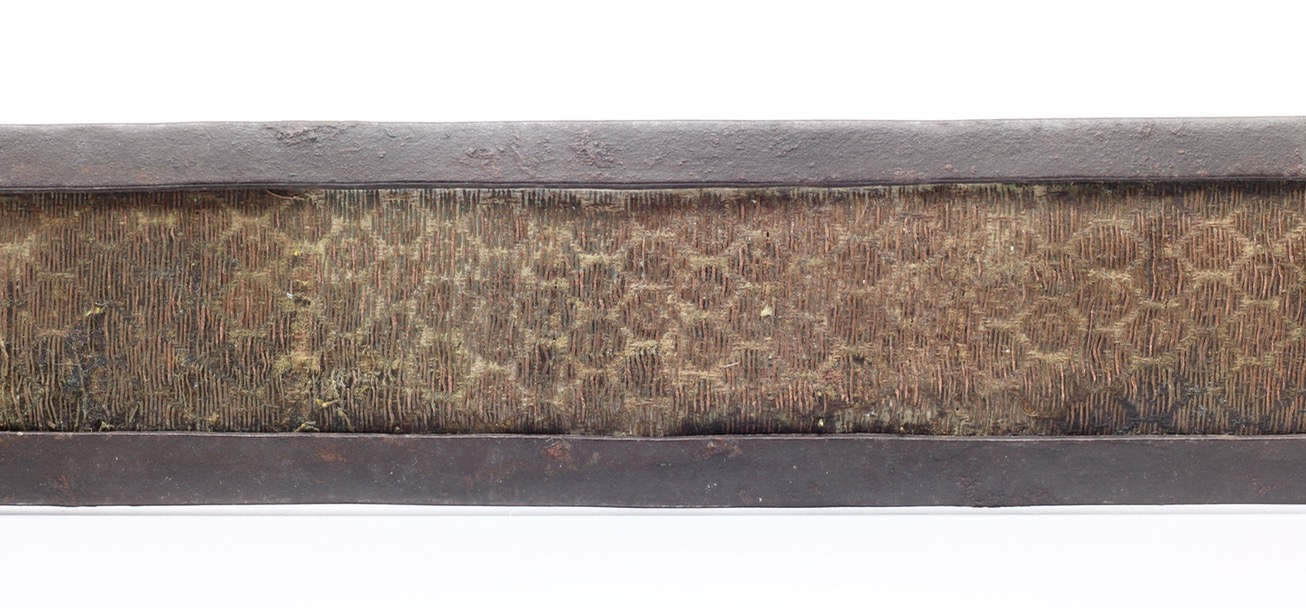



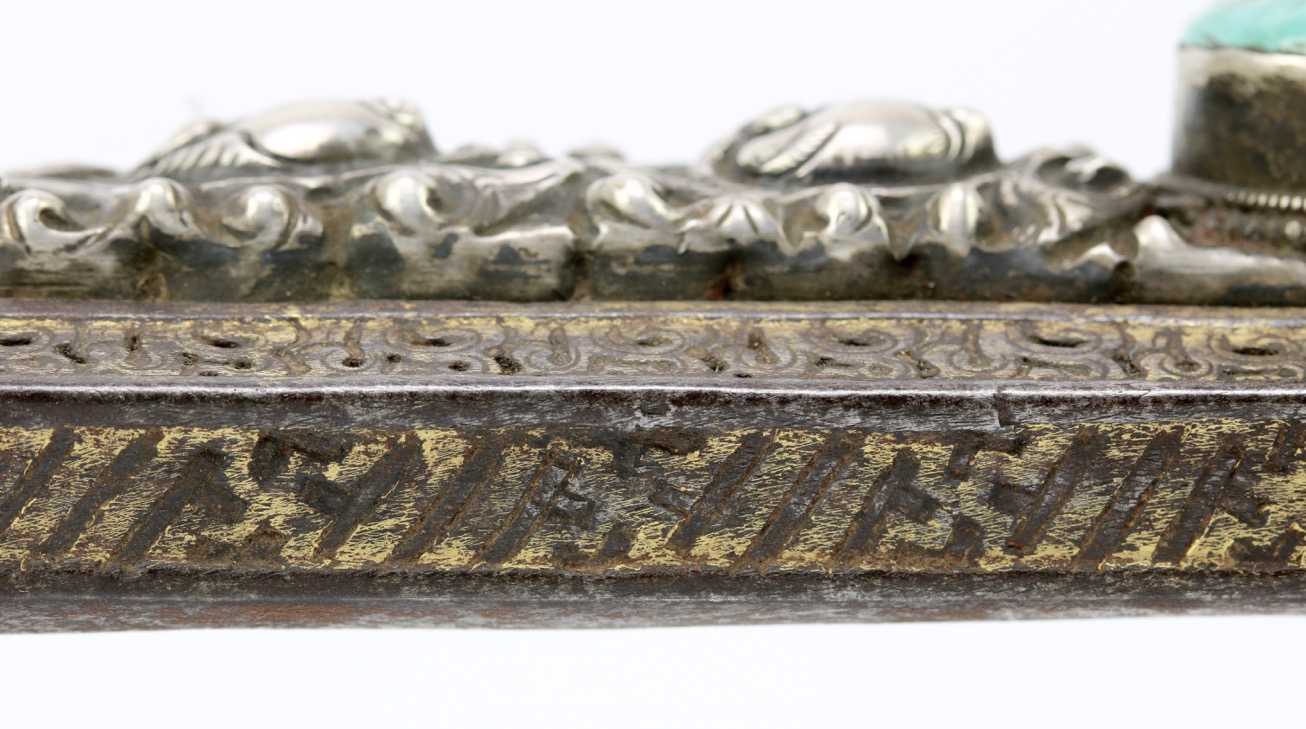




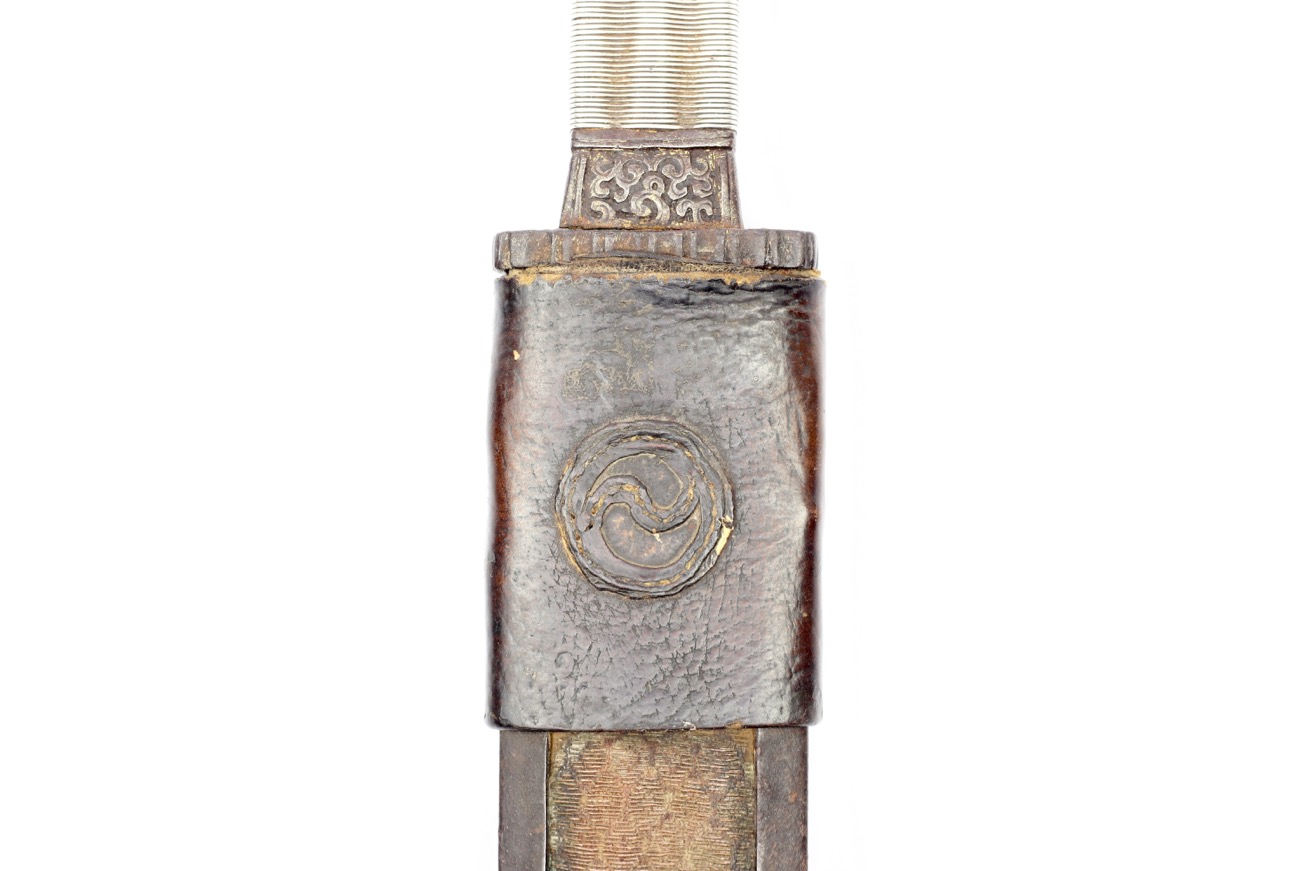
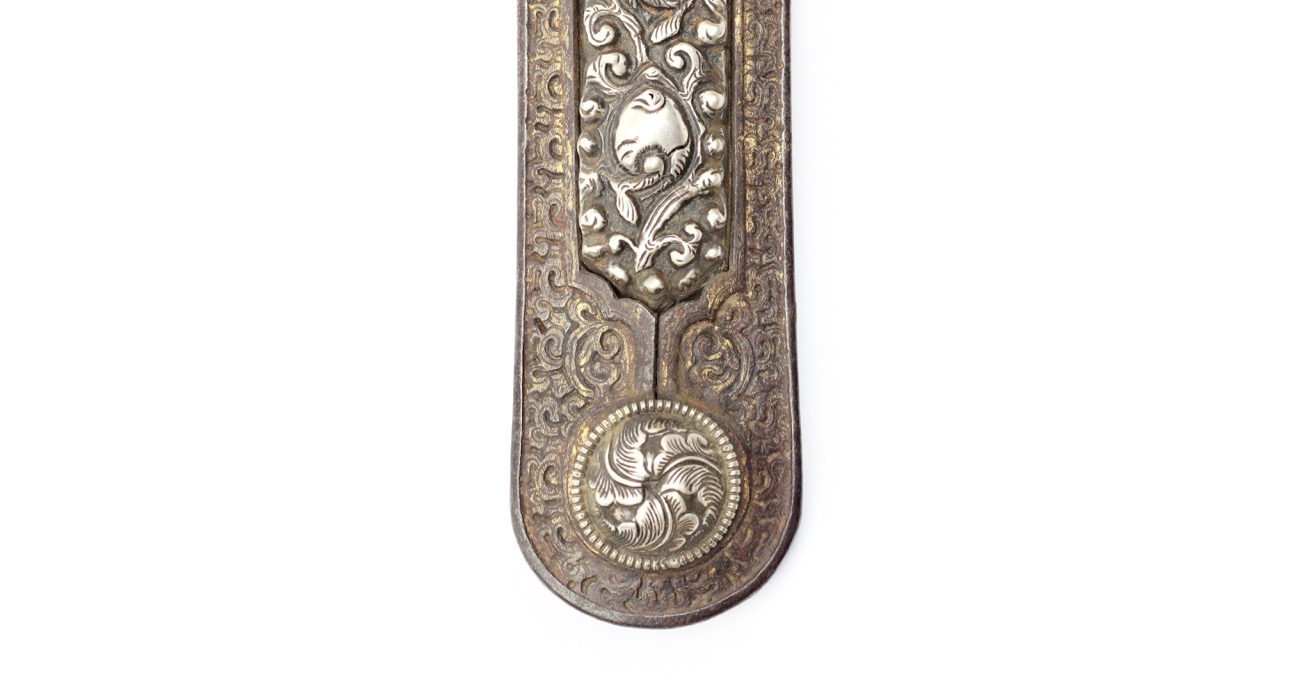
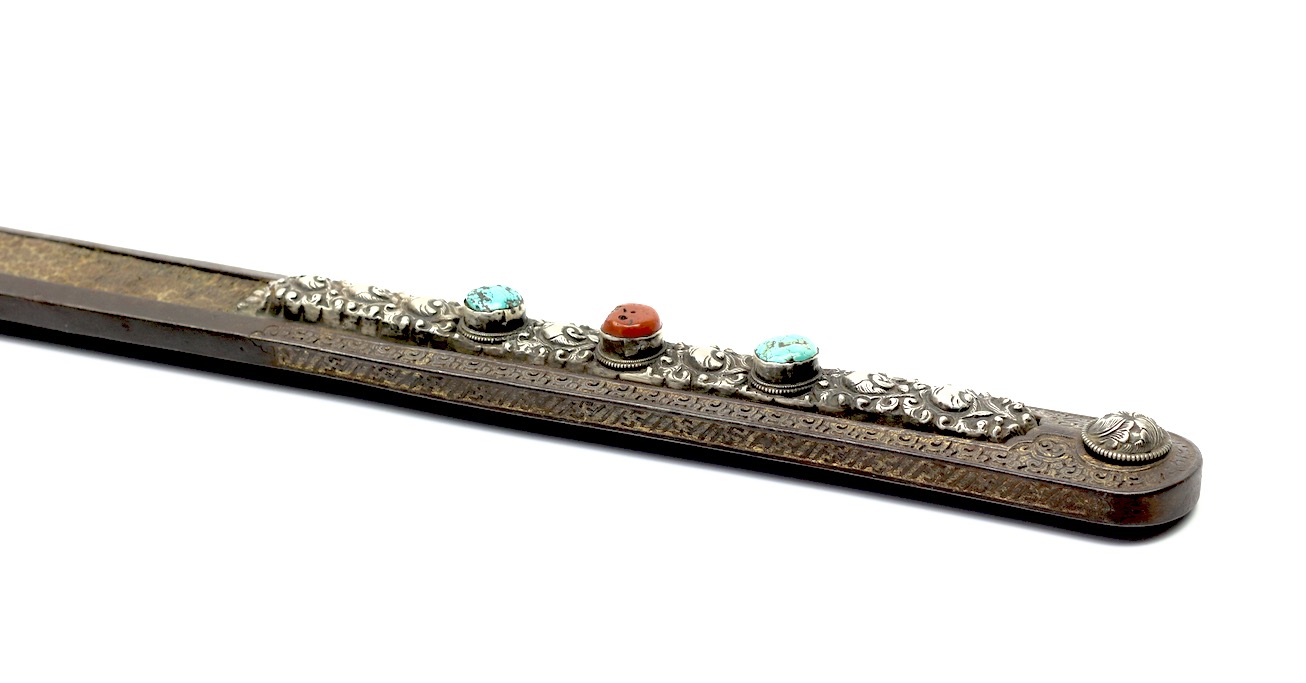








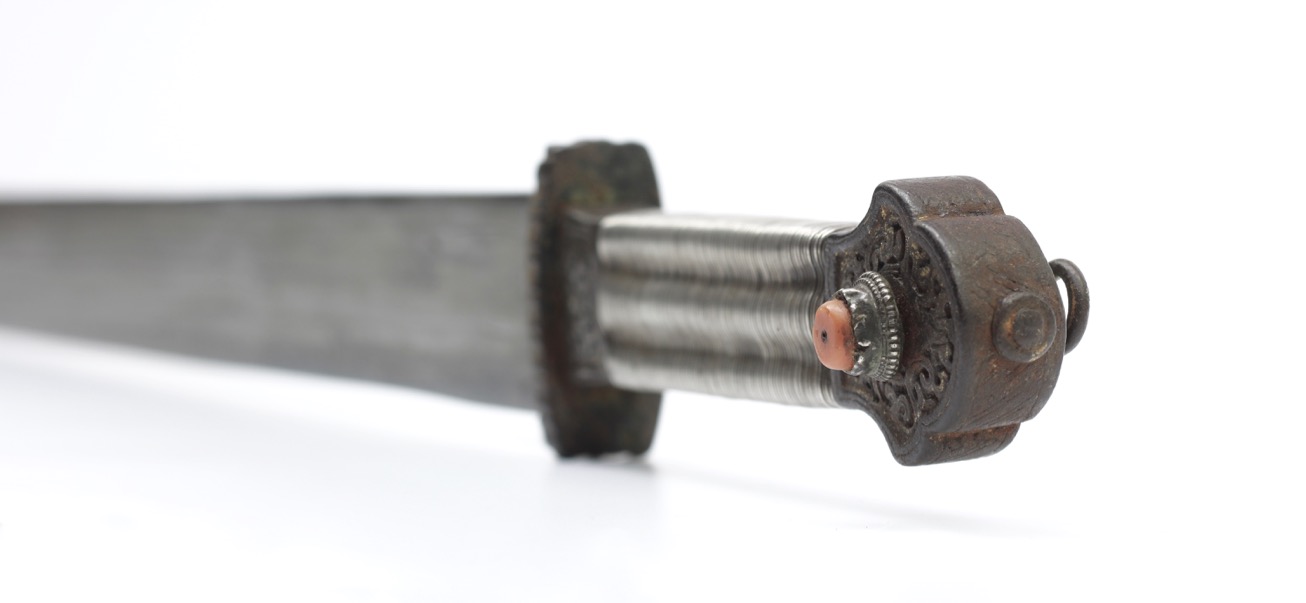

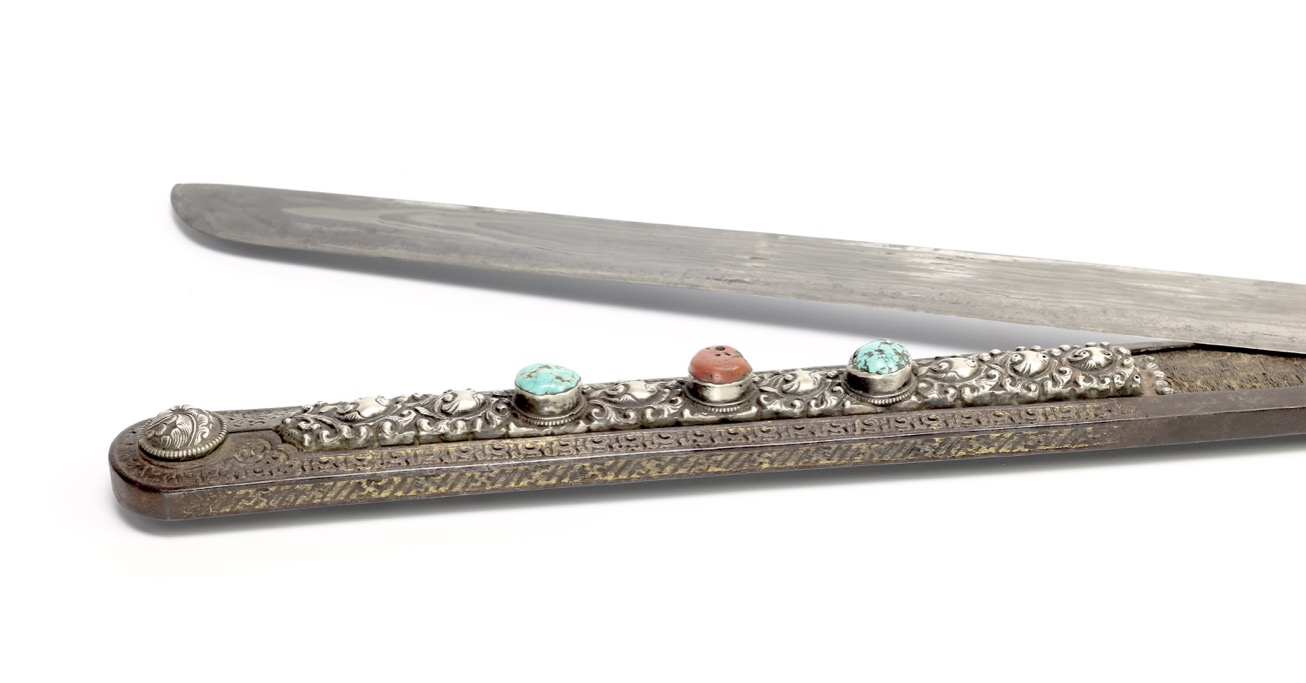

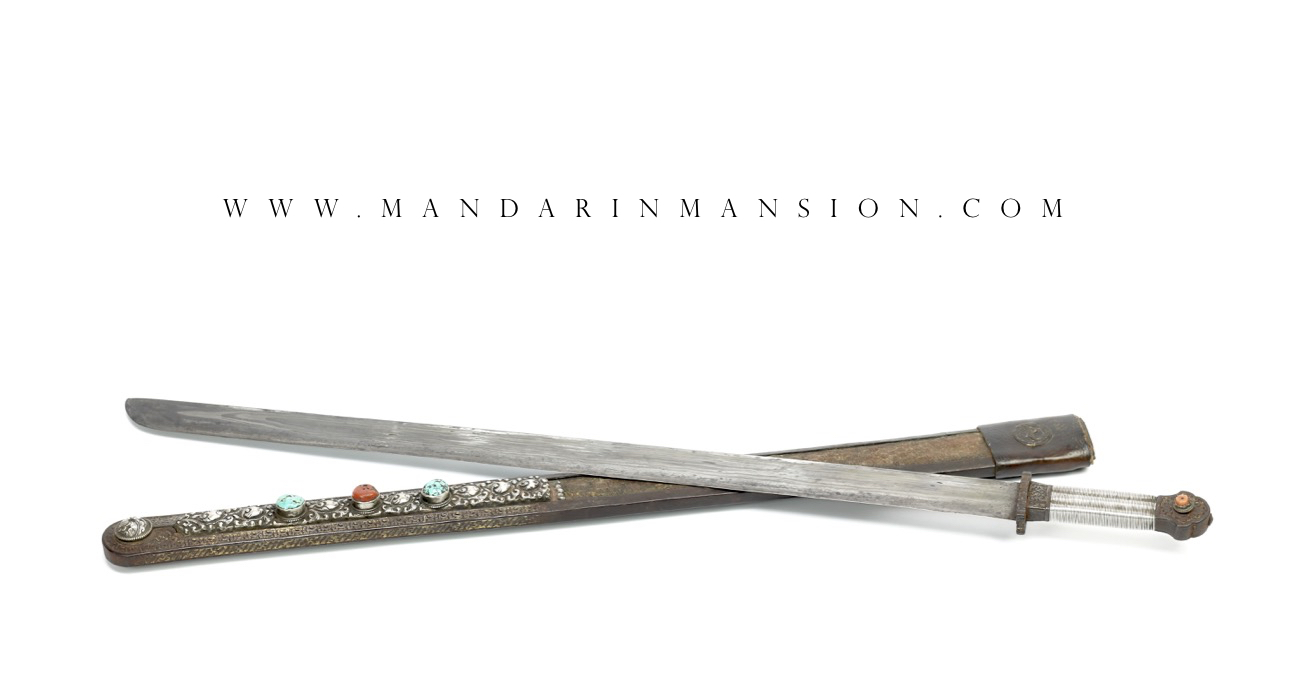
With a very fine Nepalese blade, but kard-like hilt and scabbard.

